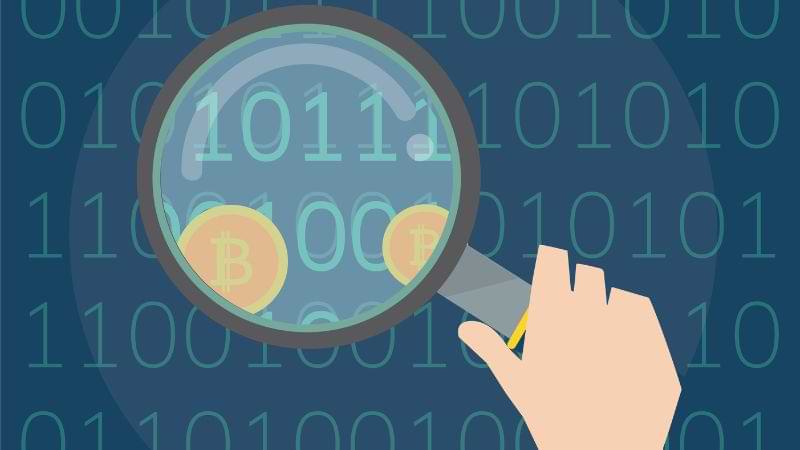Are you searching for cybersecurity projects for beginners? Do you want to work on a cybersecurity project? Here, in this article, we discuss cybersecurity project ideas for beginners. As you know, Cybersecurity is essential because it detects and prevents all digital attacks. Such an example protects data, networks, banking, user security, and more.
Cybersecurity projects are useful for you because you can understand security maintenance and be aware of cyber threats. You can learn all possibilities and measurements of cybersecurity and implement them.
Projects are always useful to grow your career and create excellent skills for you. If you want a good salary and a cybersecurity specialist, you should work on live projects. In college, projects are mandatory because projects create a career path. So, let’s discuss some of the beginner’s projects in Cybersecurity.
Cybersecurity Projects for Beginners
1. Password Analyzer

Password analyzer is one of the most beginner projects of Cybersecurity. You know that many people signup for websites through passwords. Sometimes they create an easy password that can fear of hacking. So, in this project, you can build a password analyzer and suggest to the user whether the password is Strong or Not.
2. Text Encryption

Text encryption is the simplest and most exciting project for beginners. Encryption is the process that is converting information into hashcode or machine language to protect information from unauthorized access. You can encrypt text through various algorithms like Cipher, Vigenere Cipher, Railfence Cipher, Autokey Cipher, and much more.
3. Image Encryption
Encrypting images is the simplest project of cybersecurity. You can image encrypt through various algorithms like Advanced Encryption Standard(AES), DES(Data Encryption Standard), and RSA((Rivest-Shamir-Adleman). If a hacker decrypts the image, you can encrypt this project.
4. Keylogger Software
Keylogger is the best cybersecurity beginner-level project. Keylogger is software installed on your computer to record every keystroke you type, including passwords. The main goal of this project is to Keep an eye on the user’s activity to notice any suspicious or threatening activities on the devices.
5. Network Traffic Analyzer
A network traffic analyzer identifies the type of data transmitted across the network. A network traffic analyzer can troubleshoot various network problems, such as identifying threats and issues or which computers share files. This is also a easy project idea for cybersecurity project.
6. Web Application Firewall

WAF which is “ Web Application Firewall” is a process which helps in protecting web applications from attacks. It can also be used to stop SQL injection and other privacy issuesYou can say that the WAF is another layer of protection for firewalls. It stops traffic that is not allowed by the firewall and acts as an additional security layer to protect against malicious traffic.
7. Lost Data Retrieval
Ransomware attacks are becoming more common and sophisticated. In the field of encrypting data the cybercriminals are getting better and they usually target users who have weak passwords or old softwares. So, in this project , you will work on data recovery. Data can recover through the use of a backup system or software. This process can help companies protect themselves against any potential future data loss scenarios.
8. Facial Authentication System for the Web

A facial Authentication System for the Web is the best option for Cyberssecurity, such as unlocking your phone or logging into your computer. This technology is also being used to identify criminals and other people of interest.Facial recognition systems used in multiple industries, including banking and retail, have been proven to be highly accurate when identifying people.
9. Graphical Password Authentication
This is an exciting cybersecurity project for beginners Graphical passwords are graphical representations of a password. When the user needs to enter a password but doesn’t have access to the keyboard, then the graphical password comes into play, for example smartphone or a tablet. In a graphical password, your username and password is presented in a visual representation that you have set up with your account provider. This authentication is best for those devices that do not have keyboards such as smartphones or tablets because it does not need any typing.
10. SQL Injection Vulnerability

SQL injection is the way by which the hackers steal the data from the database and modify it. These security attacks can harm the organization and its customers’ data and privacy. You can work on an SQL injection project to remove the attack.
11. Data Encryption
Data encryption turns plaintext (unencrypted data) into ciphertext (encrypted data) to protect its privacy and integrity. Mathematical functions are used by encryption algorithms to disordered the data so that someone with the decryption key can only read it.
In modern cryptography there are Some basic and common encryption algorithms which are used, including Advanced Encryption Standard (AES), Data Encryption Standard (DES), and Rivest-Shamir-Adleman (RSA).
12. Anti-Virus Development

The development of certain software that can eliminate harmful software from computers and networks are done in the Anti-virus development. It is a continuous process that requires constant research and testing to keep up with the changing landscape of cyber threats.
Different key stages are generally involved in the development process, such as analysis of malware, creation of database, interface design, and updates on a regular basis .
What are Cyber Threats?
Cyber threats means any suspicious activity or attack on a computer system, or other device and their networks. For causing harm to the data or stealing it or may be interrupting normal operations. Including:
- Insider threats: It refers to attacks or data breaches caused by individuals within an organization who have access to sensitive data or systems. This can include intentional actions, such as stealing data or sabotaging systems, and unintentional actions, such as accidentally leaking confidential information.
- Phishing: It is an attack which is social engineered and uses email, instant messaging, or other communication methods to trap users into giving their sensitive information, such as credit card numbers, passwords, or other personal data.
- Ransomware: It is a harmful software that encrypts a victim’s files and demands money in exchange for the decryption key. It is often spread through emails or negatively rated websites.
- Denial-of-service attacks: These attacks are designed to overload a target system with traffic or requests, making it unreachable to users. This can be done in various ways, such as flooding the system with traffic or exploiting vulnerabilities in network protocols.
- Malware: It is software designed to disrupt computer systems or steal sensitive information. It includes viruses, Trojan horses, and other types of harmful code.
Python Cybersecurity Projects for Beginners

Here are some Python cybersecurity projects for beginners:
- Password strength checker: You can develop a program, which checks the password power on the basis of various factors like length, hardness, etc. which will help users to set a strong password and prevent hacking.
- Network scanner: Another option is to create a programme, which can scan the network for the open ports, devices which are connected and other activities. This will help administrators to scan the possible security threats.
- Malware scanner: You can also develop a programme which has the ability to detect a computer and networking harmful bugs with the help of signature based and behavior-based techniques.
- Brute-force password cracker: You can create a programme that uses the brute force attack in order to crack a password. Helps in understanding how important it is to choose a strong password which is difficult to crack.
Also, Read!!
How To Improve The Security Of Your Cloud Computing Environment
Conclusion
Here, we covered the top 10 cybersecurity projects for beginners. These projects are useful for your final year project and college placement. And also helpful in the interview because you can explain all the details according to your project. If you want to make your career in cybersecurity, you have to understand the concepts deeply and then have to apply it in the daily practice projects. And with time you should move to the advance-levels.
Frequently Asked Questions
Does cybersecurity need coding?
Cybersecurity does not necessarily require coding skills, but having a basic understanding of programming languages and concepts can be very helpful for certain aspects of cybersecurity.
Can I learn cyber security in 6 months?
Yes, it is possible to learn cybersecurity in 6 months, but it depends on your dedication, prior knowledge, and the amount of time you can dedicate to learning.

